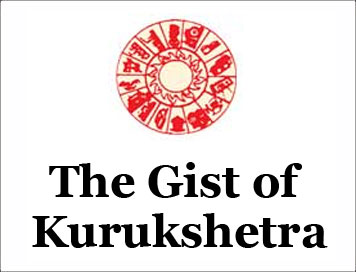(HOT) UPSC Current Affairs 2025 PDF
NEW! The Gist (NOV-2025) | E-BOOKS
(GIST OF KURUKSHETRA) GEOSPATIAL DATA FOR RURAL RESOURCE MANAGEMENT
(GIST OF KURUKSHETRA) GEOSPATIAL DATA FOR RURAL RESOURCE MANAGEMENT
(JANUARY-2025)
GEOSPATIAL DATA FOR RURAL RESOURCE MANAGEMENT
Introduction
Geospatial technology has fundamentally changed the landscape of rural resource administration and disaster readiness in India. Initiatives such as Bhuvan Panchayat and the National Database for Emergency Management (NDEM), pioneered by ISRO, enable local governance, enhance strategic planning, and boost transparency. These efforts resonate with the vision of Digital India, striving for sustainable development and efficient governance, thereby securing a promising future for rural communities in India.
Key Initiatives and Contributions
Bhuvan Panchayat Geoportal: A leading initiative by ISRO designed to empower Gram Panchayats with high-resolution satellite imagery for decentralized strategic planning.
Features:
-
Real-time Data Access: Delivers geospatial information and satellite visuals for governance and planning.
-
Advanced Tools: Provides visualization, analytical, and monitoring resources for land usage, water management, and infrastructure.
-
Web-Based Platform: Functions smoothly across various platforms, enhancing transparency and responsibility.
Version 4.0 Highlights:
-
Developed at a 1:10,000 scale, enabling accurate planning and oversight.
-
Supports comprehensive growth in sectors such as agriculture, water management, and social services.
-
Empowers Gram Panchayats to devise, execute, and oversee development programs effectively.
Impact:
-
Improved Governance: Decision-making based on data enhances openness and efficiency.
-
Sustainable Resource Management: Facilitates optimal use of land, water, and other resources.
Key Features:
-
Real-time Data and Analytics: Offers actionable intelligence during crises.
-
Multi-Phase Coverage: Aids in disaster readiness, prevention, response, and recovery.
-
Coordination Hub: Encourages collaboration between governmental and non-governmental organizations.
Version 5.0 Enhancements:
-
Fortifies disaster risk reduction protocols.
-
Fuels community resilience by educating stakeholders on risks and preparedness strategies.
Impact:
-
Mitigates loss of life and property during calamities.
-
A pioneering project intended to fortify Panchayati Raj Institutions using geospatial data. Components:
-
High-Resolution Satellite Maps: Facilitate detailed and precise planning.
-
Thematic and Base Layers: Include land usage, transport systems, drainage, and habitats.
-
Centralized Data Repository: Merges spatial and non-spatial information for improved accessibility.
-
Capacity Development: Equips stakeholders with effective geospatial tool usage training.
Implementation Phases:
-
Phase 1: Development of detailed maps and thematic layers.
-
Phase 2: Broadening the scope to incorporate updated geospatial data and integrate analytical tools. Digital India Land Records Modernization Programme (DILRMP) ISRO aids in the modernization of land records, assuring transparency and efficiency.
Features:
-
Digitization of Land Records: More than 95% of rural land records have been digitized.
-
Geo-Referencing: Aligns conventional maps with satellite coordinates for precision.
-
Aadhaar Integration: Connects land records to ensure credibility and reduce fraud. Key Satellites Involved:
-
Cartosat Series: Supplies high-resolution visuals for mapping land boundaries.
-
ResourceSat Series: Observes land usage, agriculture, and water resources.
Impact:
-
Minimizes Land Disputes: Clear ownership documentation decreases litigation.
-
Enhances Agricultural Credit: Farmers experience improved access to loans and subsidies.
-
Advocates Development: Facilitates fair compensation during land acquisitions. Significance of Geospatial Data for Rural Resource Management
-
Enhanced Decision-Making: Empowers local authorities with accurate data for planning and resource distribution.
-
Sustainable Development: Encourages optimal utilization of natural resources, ensuring environmental harmony.
-
Disaster Resilience: Bolsters preparedness and response strategies, reducing disaster impacts.
-
Improved Governance: Promotes transparency, accountability, and public involvement in development.
-
Economic Growth: Increases agricultural productivity, mitigates disputes, and encourages rural entrepreneurship.
Conclusion
Geospatial data, propelled by ISRO’s innovative platforms, is reshaping rural governance and resource management in India. Initiatives like Bhuvan Panchayat, NDEM, and DILRMP guarantee efficient planning, transparency, and sustainable advancement. By harnessing space technology, India exemplifies how scientific advancement can foster rural empowerment and disaster resilience, aligning with the objectives of Digital India and inclusive growth.
CLICK HERE TO DOWNLOAD FULL PDF
CLICK HERE TO DOWNLOAD UPSC E-BOOKS
Study Material for UPSC General Studies Pre Cum Mains
Get The Gist 1 Year Subscription Online
Click Here to Download More Free Sample Material
<<Go Back To Main Page
Courtesy: Kurukshetra



